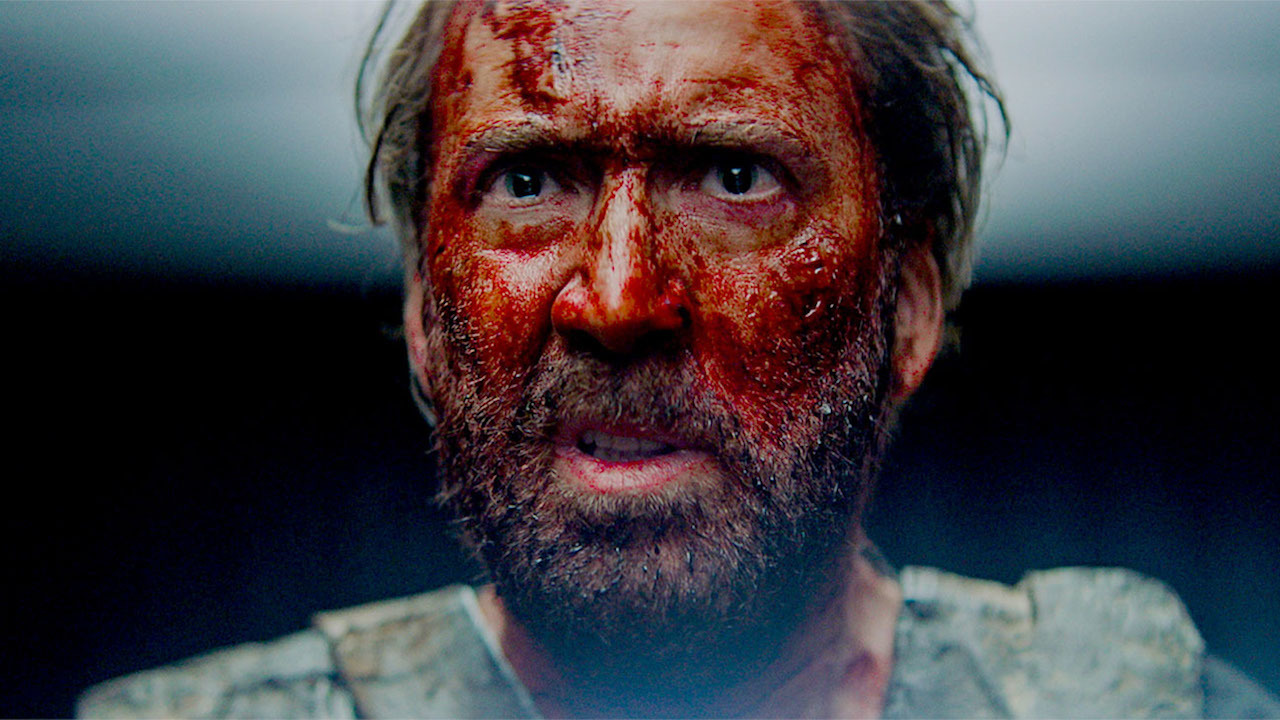
What constitutes a cult classic? It’s a term that has been used to describe when a film has failed to find a large audience and instead collected a small but devoted following. Does that definition still hold true? In part, yes. However, there are plenty of films that have failed commercially but are able to find a small and passionate audience. Nowadays, most would consider these “cult films”. But the question is: what makes a cult film a classic?
It’s not easy to define exactly what a cult classic is; the term is more malleable than that. It is the type of movie that is marketed almost purely by word of mouth, that movie you hear about over and over on film websites or from your cinephile friends. But a cult classic isn’t a flash-in-the-pan experience. It stands the test of time and obtains a sacred place on your shelf, to be revisited on occasion as the years pass by.
The only way for a film to become a cult classic is to do so naturally. The film needs to have uniqueness to it. It needs to be undeniable to its viewer, a film that sticks in their minds for days after the credits roll. It is the type of film that you immediately want to tell someone about, the type of film that feels like a discovery.
Sometimes, as you’re watching a movie, you know in your bones that what is playing on the screen is something special. Before your eyes is something that you have never seen before. A film so wholly unique, such a singular product of its creator, that you feel lucky to be witness to it. So enters Mandy, the latest film from director Panos Cosmatos. Detailed below are six reasons why Mandy is a film destined to become a modern cult classic.
6. The Story
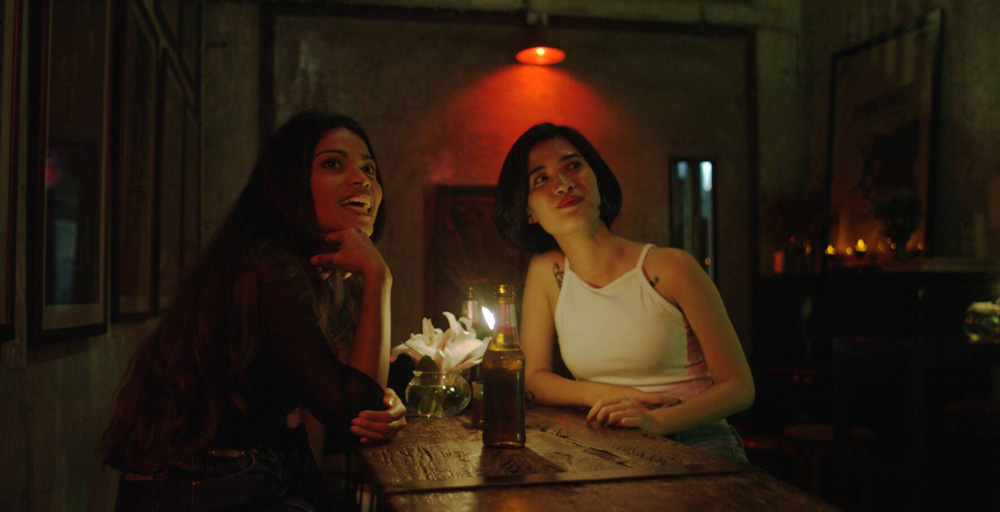
Having a unique story alone doesn’t necessarily mean that a film will become a cult classic. From a distance, Mandy’s story isn’t all that unique. It’s a revenge tale, plain and simple, and a relatively straight forward one at that. But where Mandy’s story shines is within its non-traditional complexities and utterly convincing world building.
The world of Mandy should not work as well as it does. It’s a world not unlike our own, save the motorcycle riding demons, mac and cheese puking goblins and a sky full of giant planets. These factors should come off as at least somewhat unbelievable, but that is not in any way the case.
The world feels like a dream of our own. There are normalcies and mundane things. For example, Mandy, played expertly by Andrea Riseborough, works at a convenience store where she reads tattered paperback science fiction books to pass the time. When at home, she lazily sits by her easel and paints with the door open to feel the breeze. These are human characters in a human world.
Typically when the fantastical clashes against the mundane there is a sort of inherent disconnect. But with Mandy, the world is easily accepted, warped with a dreamlike logic that holds up under scrutiny. There is no need to explain why things are like this, they just are.
A traditional revenge flick devotes its first act to the set up. We see the character’s lives before the tragedy that will inevitably occur. We see a happy family, a boring job, or get some sense of the character’s place in the world. The way Mandy handles its set up puts it apart. Half of the movie’s runtime stays almost exclusively within the quiet moments between Mandy and her boyfriend Red.
The film opens on a brief glimpse of Red’s life as a lumberjack, but after that, we don’t get much context to their lives outside one another. We lay with Mandy and Red as they talk about their favorite planets. We watch Mandy read pulpy sci-fi in silence and Red put a record on the turntable. We watch Mandy and Red eat dinner on the couch watching television. They barely speak to each other and they don’t need to. The story is in the things left unsaid and the moments in-between.
While the latter half of the film definitely kicks up the intensity, for the most part the story beats come at a deliberately slow pace. The story of Mandy plays like a lethargic and dreamy fairytale before it crashes into all out chaos. While it has some semblance of a traditional revenge tale, it ends up being anything but traditional. What may come as a surprise to some viewers is how genuinely funny the film can be.
The story allows for moments of some incredibly specific humor that could easily come off as trite but ends up really sticking the landing. At the end of the day, Mandy fills the corners of its story with mystical characters and unique moments. It feels like the novelization of a prog-rock concept album that never was.
5. The Director
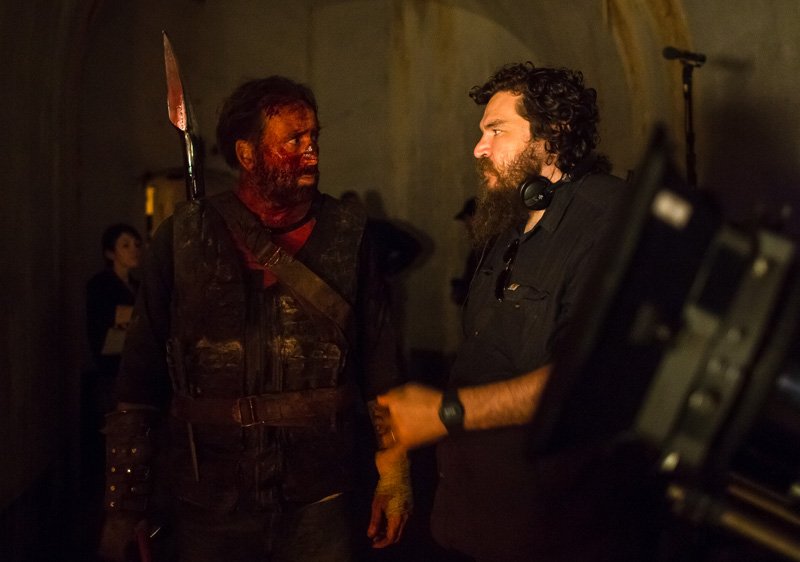
A factor that often lends itself to a film becoming a cult classic is the presence of a singular voice, a voice that is unclouded by a big budget, studio execs or fear of mass appeal. With only two films under his belt, director Panos Cosmatos already has one of the most singular voices in modern filmmaking. His films are unmistakably his own.
With the release of Mandy, Cosmatos has begun to carve his niche even deeper. He not only adds stylish touches to certain sequences, but he leaves his psychedelic fingerprints all over the film. From the tone, to the pacing, to the cinematography, to the hand drawn animated segments in the style of Heavy Metal, one gets the feeling that we are stepping straight into his mind. No one else is doing anything like this with results that are even remotely close to what Cosmatos accomplishes.
In the time of fast paced sequels and popcorn reboots, Cosmatos stands defiantly apart. A cult classic is often born from a singular vision, be it a juvenile pretention and sense of place like Donnie Darko or the result of boatloads of unknown funding mixed with laughable ineptitude like The Room, these are films born out of the mind of their creators. Mandy stands beside the greats in its singular vision and the world of modern cinema is better for it.
4. The Violence
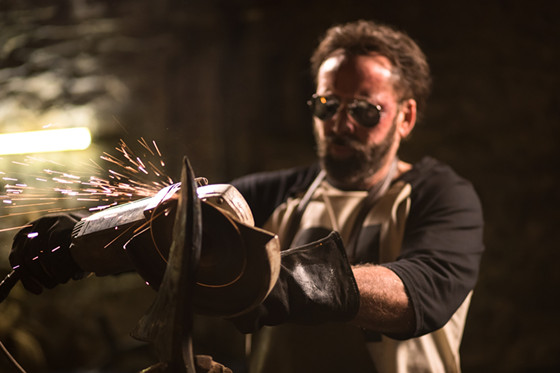
A cult classic film in no way has to inherently be violent, but it sure doesn’t hurt. In its latter half, Mandy plays like a brutal homage to b-movie grindhouse film. By the time the title card comes up (which is about an hour into the film) we know we are in for a wild ride.
This isn’t Mission Impossible or a Tarantino film, the choreography is limited and the set pieces are almost nonexistent, but this does nothing to the overall impact of the violence. Instead, the fights in Mandy are full of a raw, bat-shit-crazy, punk rock energy that screeches off of the screen.
The sequences of violence already feel iconic. This is a movie where Nicolas Cage slits the throat of a demon that has a knife for a penis and laughs hysterically as the blood drenches his face, blood that will stay on his face for the rest of the film. This is a movie where Nicolas Cage decapitates a demon with a massive self-forged battle axe and then lights a cigarette off of its burning head.
Hell, this is a movie that features in a one-on-one chainsaw fight to the death. As was said in the beginning, violence doesn’t make a film a cult classic. But Mandy’s level of dedication to pure imaginative and creative violence makes it something worth noting.
3. The Nicolas Cage Performance
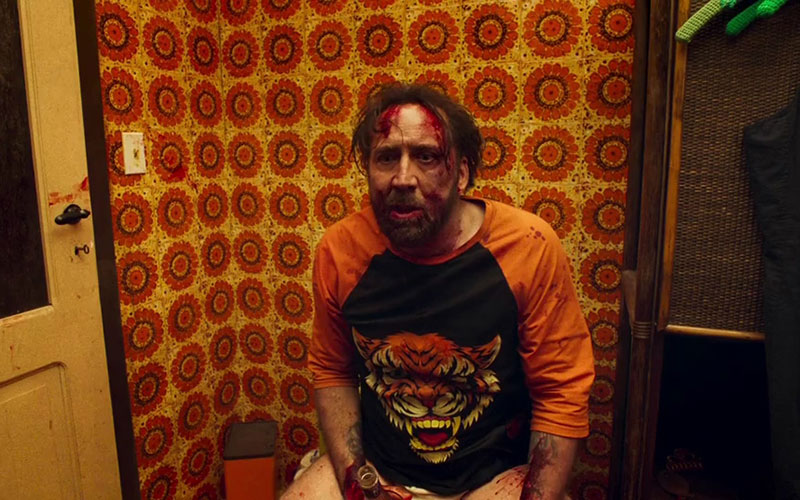
Typically, when Nicolas Cage is mentioned in the summary of any movie with a cult following it’s in reference to one of those “so bad it’s good” cult classics. He’s an enigmatic actor (or as he would say, thespian) who more often than not gives either an absolutely confounding manic performance or just seems to phone it in. He’s a hard one to pin down and has become somewhat infamous for this fact.
In Mandy, Nicolas Cage’s performance sits comfortably on the manic spectrum. But the way Panos Cosmatos harnesses this manic energy is something that has not yet been done before and something incredibly special.
In the first half of the film we get a quiet, reserved Nicolas Cage. His character, Red, is the silent strong type. Think Ryan Gosling in Drive, but out of shape. Honestly, for the first hour there’s nothing special there. He does seem to understand the script though and when it calls for it he has pretty respectable comedic timing, but it is in the latter half of the film with Nicolas Cage shines beyond all belief.
It all begins with the bathroom scene. If you’ve seen Mandy, you know what I’m talking about. It is a scene filled to the brim with that signature Nicolas Cage craziness. Even the cameraman seems to be unsure about what Cage might do as it eases closer to him and snaps back in hesitation when he moves. It’s pure bliss.
Mandy is full of these perfect Nicolas Cage moments too. We get an overacted Kung-Fu neck snap straight out of a Jackie Chan movie, followed by Cage immediately snorting a ridiculous amount of cocaine before walking over to the counter and dosing pure acid. Read that previous sentence again. Yeah, it’s amazing.
What’s even more amazing is that these moments don’t feel out of place. Cage’s performance is full of the otherworldly energy shared by the rest of the film. His mania feels true to his character Red, who is pushed to his limits and comes out the other side with the undying rage of a man who has lost everything, including his mind. In some movies, just Cage’s performance alone is enough to cement a cult classic status. In Mandy, his performance is both wildly entertaining and serves the story and vision with a result that may prove to be iconic.
2. The Soundtrack
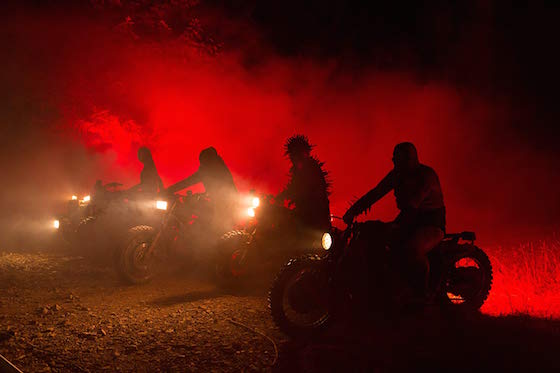
A large part in why Mandy feels so special is the fact that all elements of the film are working in tandem to create a specific mood and tell a specific story. An integral part of this flow is the soundtrack, created by the late Icelandic composer Jóhann Jóhannsson. The final score before his passing, Jóhannsson’s soundtrack is full of atmospheric ambience and low pulsing synths. It functions as an absolutely necessary part of the film as a whole. Mandy without this soundtrack would no longer be Mandy.
Jóhannsson was on top of his game here, proving an almost intimate knowledge of what the film is trying to relate. He creates oppressive, booming synth tracks that relay the feeling of frenzied dread with songs such as “Forging the Beast” and light, airy fairytale melodies for the sweeter moments with songs like “Mandy Love Theme”. For every story beat, Jóhannsson’s score is there to make music of the moment. It is at one second beautiful, the next dreadful, but always perfect.
Even with the ambient non-music soundscapes like “Horns of Abraxas”, the soundtrack proves to be consistently on tone. Not just on tone, the soundtrack sets the tone. This is not an easy feat with a film like Mandy. How do you score a scene where Nicolas Cage meets an LSD chemist oracle with a pet tiger? How do you non-verbally convey the depravity of a cult of Jesus freaks who have violently and collectively lost their minds?
Well, somehow Jóhannsson did it and he did it with the deft hand of a master. He created the perfect 80s-esq synth soundtrack to a fairytale-on-acid and that alone should solidify its place in the lexicon of great film scores.
1. The Atmosphere
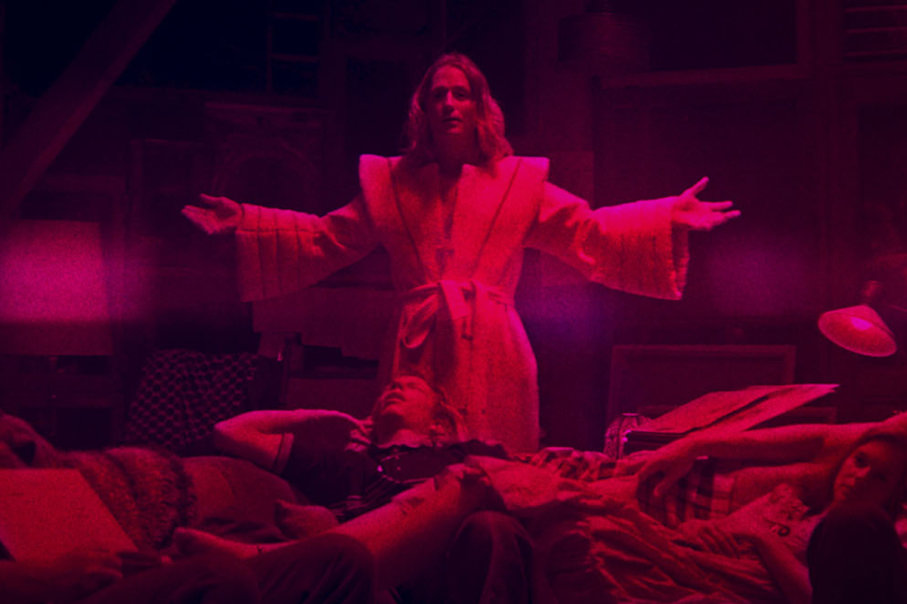
Arguable the most important factor in making Mandy a cult classic is its undeniable sense of atmosphere. Like Beyond the Black Rainbow before it, Mandy is dripping with an almost 70s sci-fi ambience. The entire film is drenched in moody blues, eerie reds and golden yellows. These colors reach out to the world around the main characters; the hills and trees emit strong a dark radiance and the mountains stir with an unending fog.
This gives the landscape an otherworldly feel. From what we’ve seen and heard throughout the film we understand this story seems to be taking place on Earth. But when the mise-en-scene is taken into account, maybe a more apt conclusion is that this is the Earth of fairytales. A dream-like brother to our own planet, drenched in neon.
The choices Cosmatos makes throughout the film give even more insight to this sense of mood and place. The camera lingers intrusively on the quieter moments and when things kick into high gear it almost seems afraid of what Nicolas Cage’s Red might do next. Cosmatos juxtaposes moments of pure unimaginable tragedy and wickedness to moments of slapstick comedy, with barely a breath in-between. It is these abrupt changes in mood that give Mandy a heavy metal intensity. Well, that and Nicolas Cage forging his own demon-slaying battle-axe.
This unique atmosphere is found in every frame of the film, every cue of the score, and every turn of the story. It is one cohesive living thing. The camera sweeps through a dim lit mountain trail as it follows Red driving high speed towards a new danger and we feel as if we are watching a legendary hero make his way through the hidden valleys of Mars.
An overweight demon watches porn surrounded by mountains of cocaine in a seedy living room and we feel as if we’ve entered the first level of Hell. There are moments of eye-tricking trippyness that dig deep into your senses and there are moments of calm beauty that feel serene. All of this serves the greater atmosphere as a whole. It is an atmosphere that is brilliantly realized and objectively original.
Above all things, Mandy has a unique quality to it that is hard to pin down. It is a refreshing take on the revenge movie genre that has all the makings of a film that will easily collect a passionate following of likeminded movie goers hungry for something new. It will put off just as many, if not more, moviegoers in the process, but isn’t that what makes films like Mandy special? Mandy is a movie that people will feel passionately about in both directions and one that is destined to become a cult classic.